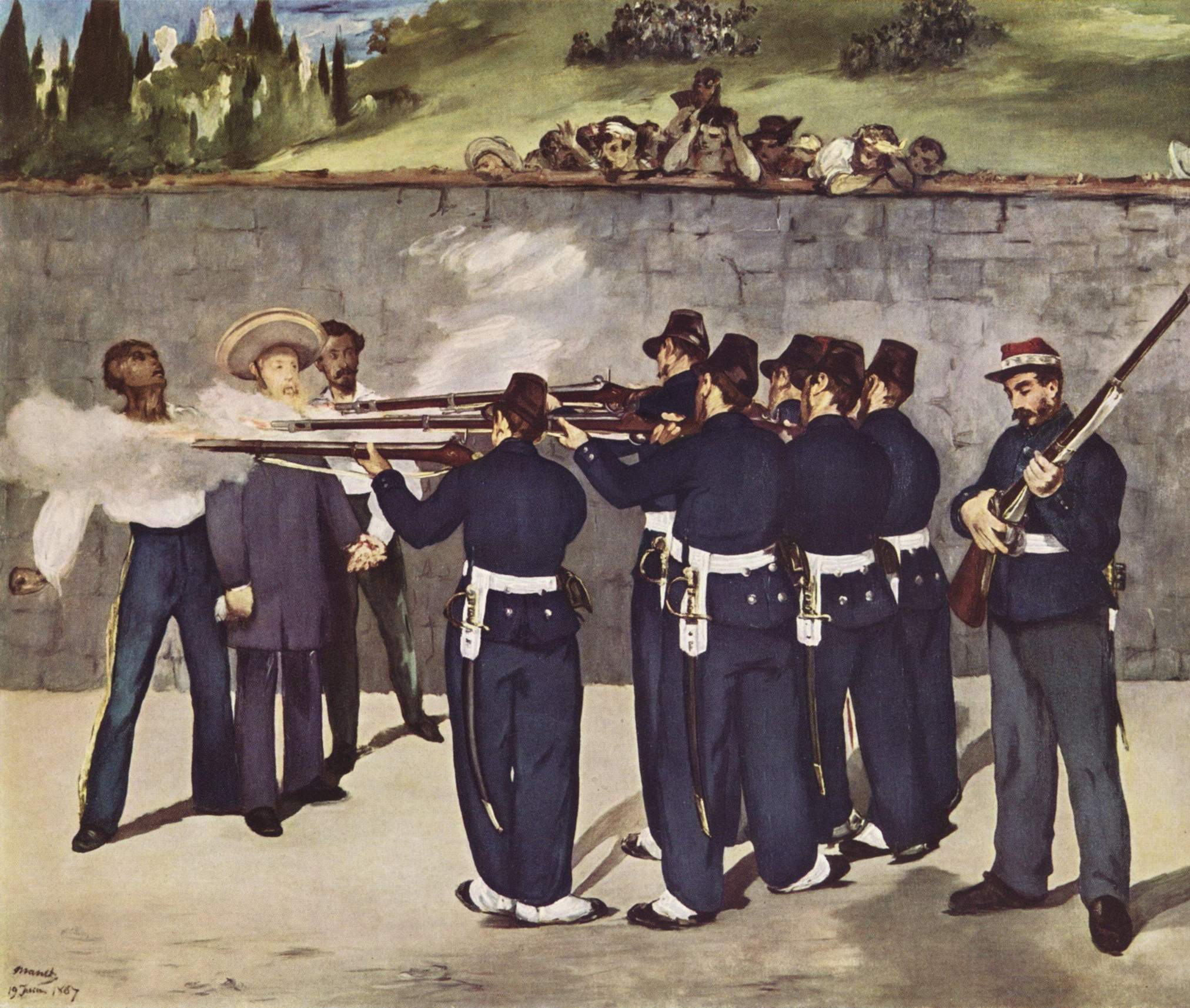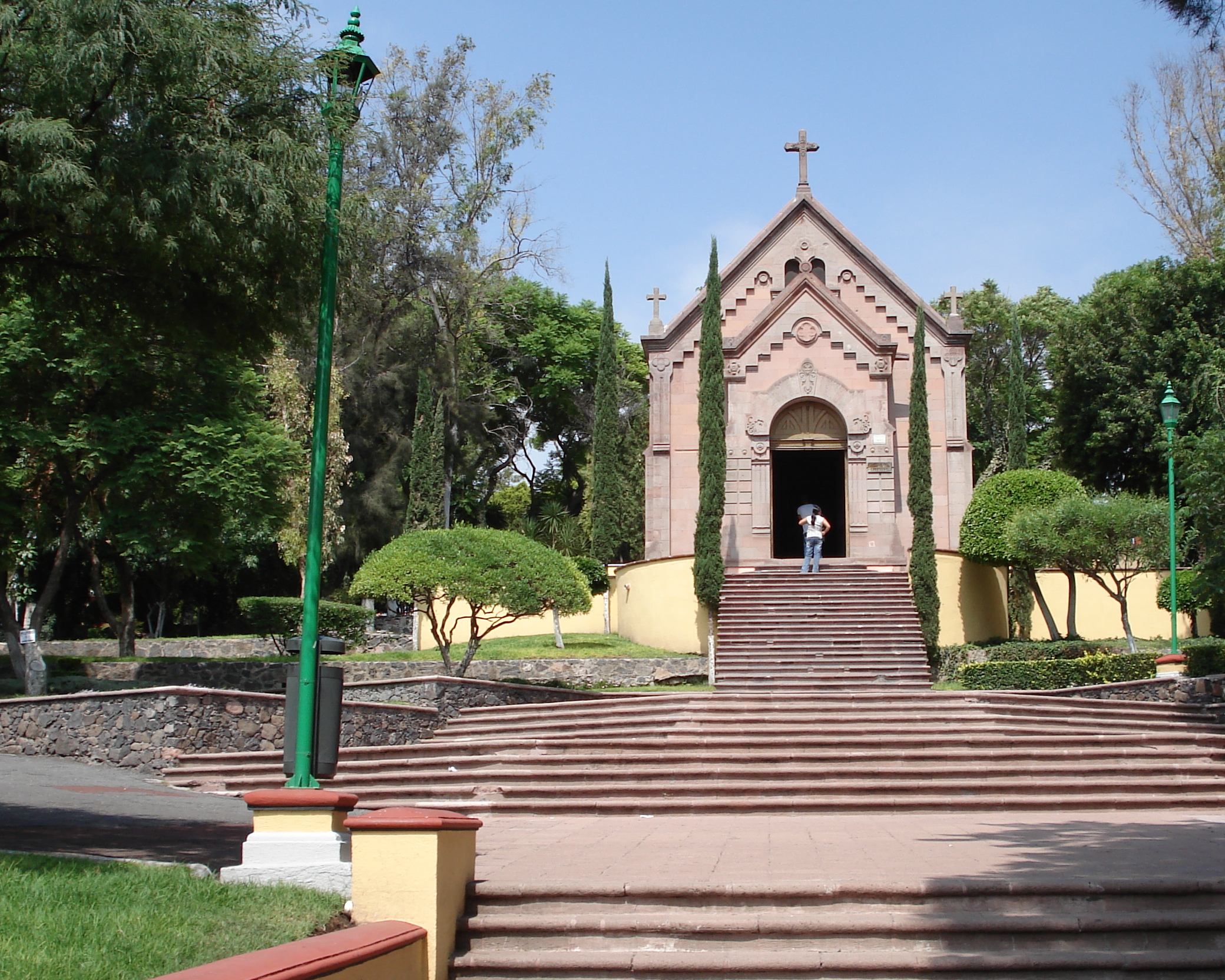Cerro de las Campanas on:
[Wikipedia]
[Google]
[Amazon]
 The ''Cerro de las Campanas'' ("Hill of the Bells") is a hill and national park located in
The ''Cerro de las Campanas'' ("Hill of the Bells") is a hill and national park located in
 The hill on what was formerly the outskirts of Querétaro was the site of the end of the Second Mexican Empire. After being intercepted by the republican generals on May 15, 1867, Maximilian, who had been besieged in the central city of Querétaro since March, surrendered on the mountain to General
The hill on what was formerly the outskirts of Querétaro was the site of the end of the Second Mexican Empire. After being intercepted by the republican generals on May 15, 1867, Maximilian, who had been besieged in the central city of Querétaro since March, surrendered on the mountain to General
 In 1900, after relations between Mexico and Austria resumed, the
In 1900, after relations between Mexico and Austria resumed, the
 In the 1950s, on the west slope of the hill, the Querétaro State Fairgrounds were constructed; the fair would later move to a new site in the early 1970s. On May 15, 1967, the centennial of the arrest of Maximilian, a portion of the mountain, including the east side and the summit, was designated a national park, the same day as the inauguration of a statue of
In the 1950s, on the west slope of the hill, the Querétaro State Fairgrounds were constructed; the fair would later move to a new site in the early 1970s. On May 15, 1967, the centennial of the arrest of Maximilian, a portion of the mountain, including the east side and the summit, was designated a national park, the same day as the inauguration of a statue of
 The ''Cerro de las Campanas'' ("Hill of the Bells") is a hill and national park located in
The ''Cerro de las Campanas'' ("Hill of the Bells") is a hill and national park located in Querétaro City
Santiago de Querétaro (; Otomi language, Otomi: Dähnini Maxei), known simply as Querétaro City ( es, Ciudad de Querétaro), is the capital and largest city of the state of Querétaro, located in central Mexico. It is part of the macroregion of ...
, Mexico. It is most noteworthy as the place where Emperor Maximilian I and Generals Miguel Miramón
Miguel Gregorio de la Luz Atenógenes Miramón y Tarelo, known as Miguel Miramón, (29 September 1831 – 19 June 1867) was a Mexican conservative general who became president of Mexico at the age of twenty seven during the Reform War, serving b ...
and Tomás Mejía Tomás may refer to:
* Tomás (given name)
* Tomás (surname) Tomás is a Spanish and Portuguese surname, equivalent of ''Thomas''.
It may refer to:
* Antonio Tomás (born 1985), professional Spanish footballer
* Belarmino Tomás (1892–1950) ...
were executed, definitively ending the Second Mexican Empire and French intervention in Mexico. The mountain gets its name from rocks that make bell sounds when struck.
History
 The hill on what was formerly the outskirts of Querétaro was the site of the end of the Second Mexican Empire. After being intercepted by the republican generals on May 15, 1867, Maximilian, who had been besieged in the central city of Querétaro since March, surrendered on the mountain to General
The hill on what was formerly the outskirts of Querétaro was the site of the end of the Second Mexican Empire. After being intercepted by the republican generals on May 15, 1867, Maximilian, who had been besieged in the central city of Querétaro since March, surrendered on the mountain to General Mariano Escobedo
Mariano Antonio Guadalupe Escobedo de la Peña (16 January 1826 – 22 May 1902) was a Mexican Army general and Governor of Nuevo León.
Early life
Mariano Escobedo was born in San Pablo de los Labradores (which is today known as Galeana), ...
. He was jailed on the mountain along with his two generals: Miramón, who had been the president of Mexico for most of 1859 and 1860, and Mejía, a Querétaro-born cavalry general. After a court-martial in Querétaro in which all three were sentenced to death, the sentence was carried out atop the hill on June 19, 1867, when Maximilian, Miramón and Mejía were executed.
The site was initially marked with piles of stone topped by crosses made of sticks; later, wooden crosses were placed on the site, which are now housed in the Cerro de las Campanas Museum. In 1886, the first monument was constructed on the site: three stone columns engraved with the names of the deceased, surrounded by iron bars supported by wooden columns, commissioned by Governor .
Emperor Maximilian Memorial Chapel
 In 1900, after relations between Mexico and Austria resumed, the
In 1900, after relations between Mexico and Austria resumed, the Emperor Maximilian Memorial Chapel
The Emperor Maximilian Memorial Chapel is a small Roman Catholic chapel located on the ''Cerro de las Campanas'' (Hill of the Bells) in Querétaro City in central Mexico. It is dedicated to the memory of Emperor Maximilian I of Mexico, and was bu ...
was constructed on the site. Commissioned by Emperor Franz Joseph I
Franz Joseph I or Francis Joseph I (german: Franz Joseph Karl, hu, Ferenc József Károly, 18 August 1830 – 21 November 1916) was Emperor of Austria, King of Hungary, and the other states of the Habsburg monarchy from 2 December 1848 until ...
in memory of his late brother the chapel was dedicated on April 10, 1901.
20th-century uses and declaration of a national park
 In the 1950s, on the west slope of the hill, the Querétaro State Fairgrounds were constructed; the fair would later move to a new site in the early 1970s. On May 15, 1967, the centennial of the arrest of Maximilian, a portion of the mountain, including the east side and the summit, was designated a national park, the same day as the inauguration of a statue of
In the 1950s, on the west slope of the hill, the Querétaro State Fairgrounds were constructed; the fair would later move to a new site in the early 1970s. On May 15, 1967, the centennial of the arrest of Maximilian, a portion of the mountain, including the east side and the summit, was designated a national park, the same day as the inauguration of a statue of Benito Juárez
Benito Pablo Juárez García (; 21 March 1806 – 18 July 1872) was a Mexican liberal politician and lawyer who served as the 26th president of Mexico from 1858 until his death in office in 1872. As a Zapotec, he was the first indigenous pre ...
and a new esplanade by President Gustavo Díaz Ordaz
Gustavo Díaz Ordaz Bolaños (; 12 March 1911 – 15 July 1979) was a Mexican politician and member of the Institutional Revolutionary Party (PRI). He served as the President of Mexico from 1964 to 1970.
Díaz Ordaz was born in San Andrés ...
and Governor Manuel González Cosío y Rivera; the statue was designed and sculpted by Juan F Olaguibel. The base of the statue features an engraving of a quote by Juárez, ''Entre los individuos como entre las naciones, '', or "Among individuals as among nations, respect for the right of others is peace".
The southern and western slopes of the hill were transferred in the early 1970s from the fair to the Autonomous University of Queretaro, whose main university campus on the site was dedicated in December 1973.
Museum
The municipal government of Querétaro operates a museum on the mountain, constructed in 2003 and featuring five permanent exhibit rooms. The museum receives some 10,000 visitors each month.References
External links
{{authority control Landforms of Querétaro Hills of Mexico History of Querétaro National parks of Mexico Maximilian I of Mexico Tourist attractions in Querétaro Protected areas of Querétaro